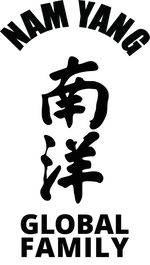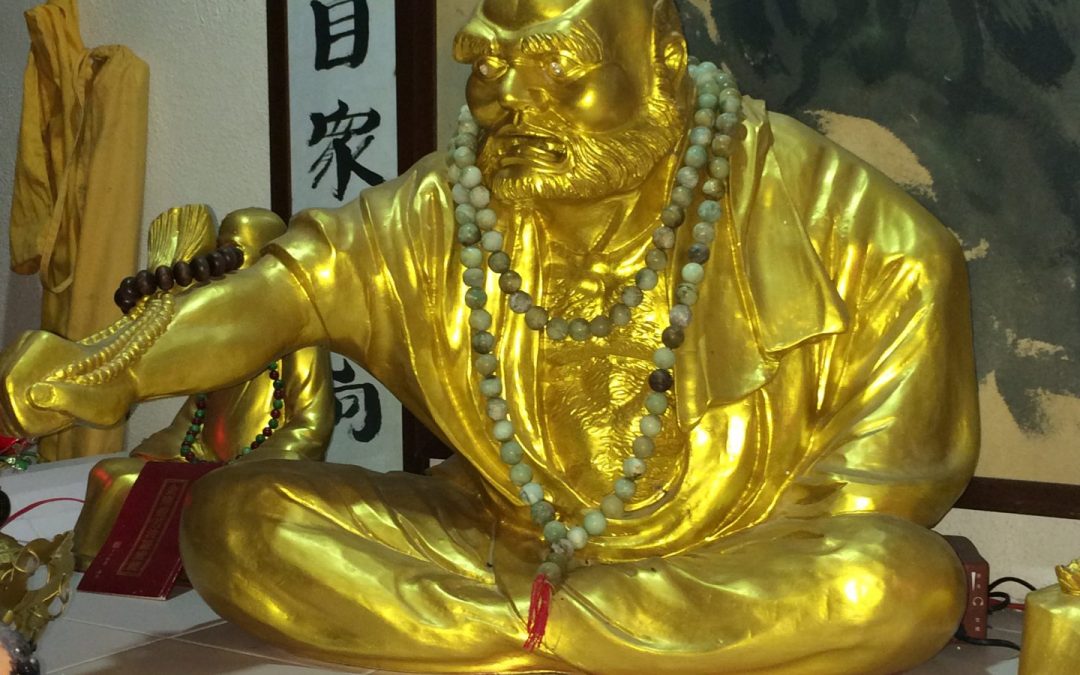Bodhidharma, called Tat Mo by the Chinese, is revered as the founder of Shaolin Kung Fu and Chan (Zen) Buddhism, the source of the tea plant and the first person to introduce shoes to China!
Wu Zu: A Shaolin History
少 林 詠 春 白 鹤 拳
SHAOLIN YONG CHUN WHITE CRANE
TIGER – CRANE COMBINATION
AN UNTOLD STORY
In the world of Chinese martial arts, much is owed to the Shaolin Temples. From the southern Shaolin styles, it is well known that there are five main ancestral systems 五 ( w u ) 祖 ( z u ) . Hard or soft, (刚 ( g a n g ) or 柔 ( r o u ) ) each system has its own advantages and techniques. However all systems follow the same basic principles in order to reach the pinnacle of martial arts. In the external system consistency, hard work and correct training will enhance the practitioner’s skill. In the internal soft system the developing strength comes from depth of practice. Proper in depth knowledge of the system is needed for a practitioner to excel in the training of strength.
The Shaolin Temple was built in the Wei Tai He era ( 魏 太 和 )(AD220-265) behind the green foothill north of Shao Bao mountain ( 少 宝 山 ) in the North West of Deng Feng ( 登 封 )county of the He Nan Province( 河 南 省 ). Sui Wen emperor ( 隋 文 帝 )(AD581-618) later change its name to Zhi Hu ( 陟 岵 ). During the Tang Fu Ming ( 唐 復 名 )era (AD618-907) , Tang Wu De ( 唐武 德 ) and Chu Tai Wang ( 初 泰 王 ) informed the chief instructor of Shaolin Temple that at the right of the monument was a meditation hall. In the North of Shi Shi there is a monumental tablet recording Da Moh’s nine years in secluded meditation ending with the words (Unite when you see a Qing)( 见 ( j I a n ) 清 ( q I n g ) 统 ( t o n g ) 一 ( y I ) 至 ( z h I ) This is the record of Shaolin involvement in the rebellion against the Qing’s rule (AD1644-1911). Sakamuni Budhism spread from the Sui dynasty through the Ming dynasty (AD1368-1644) for more than five century. There are thirteen disciples in the temple who are very interested in martial art, they train in the Da Moh system (译 ( y I ) 为 ( w e I ) 法 ( f a ) which started the Shaolin system ( 少 林 ( s h a o l I n ) 派 ( p a I ) . During the North South era (AD 420-589) and the reign of Emperor Liang Wu Di (AD502-556)( 梁 武 帝 ), after much traveling and preaching Da Moh crossed the river and return to the Shaolin Temple to stay in secluded meditation for nine years emerging with the first scripture of Zen Budhism. ( 禅 ( c h a n ) 宗 ( z o n g ) 第 ( d I ) 一 ( y I ) 纪 ( j I ) )
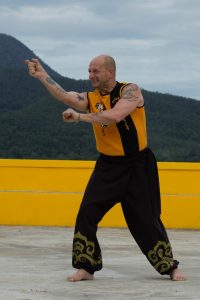
Author Iain Armstrong at Nam Yang’s Thailand Retreat in 2017: still performing the tiger – crane combination style of kung fu as taught by Grand Master Ang Lian Huat.
All systems started with the Tat Moh system, (达 d a 摩 m o ), Tai Zu (AD920) (太 祖 tai z u ) or Emperor system second, and later Luo Han (罗 汉 ) and Xing Zhe (monkey) (行 者). All these styles evolved in teaching and promoting their system to the martial arts world, keeping in line with the original principles and teachings from the masters of each system. It was not until the Qing (清)(AD1644-1911) period that the White Crane system, originated by Bai He Chan Shi (白 鹤 禅 师) ,( the White Crane Monk), was taught. From the original White Crane evolved other different schools of White Crane, each unique to themselves.
A martial artist has to train very hard and master the art for him to be effective with skills and techniques. Eventually all 36 bones and 72 movable joints of the body will be able both to bear and deliver strength. In breathing there are also special methods which must be practiced to enhance the development of the practitioner. When this is attained, your muscles and reflexes will be able to better react to an opponent.
In the White Crane family there is the Soft Crane (软 ( r u a n ) 鹤 ( h e ) originated by Fang Qi Niang (方 七 娘 ) . There are the Full White Crane (全 ( q u a n ) 鹤 ( h e ) and also the Later White Crane ( 后 ( h o u ) 鹤 ( h e ) that apply special (tan) springing strength on near body contact. In Master Ang’s Yong Chun Bai He Quan Quan (詠 春 白 鹤 拳 ) also known as Hu He Shuang Xing Quan,( 虎 鹤 双 形 拳)uses the long fist methods which includes the techniques of swallow 吞 ( t u n ) vomit 吐 ( t u ) ,float 浮 ( f u ),sink 沉 ( c h e n ) , strike 打( da ) ,hold 压 ( y a ) , side 偏 ( p I a n ) and spring 弹 ( t a n ) . The Eight Methods八 ( b a ) 法 ( f a ) system of hand movements is also incorporated in to the hand patterns, which incorporate the system the 5 Elements System (wu xing jiu gong fa, 五 形 九 宫 法 )of metal 金 ( j I n ) wood 木 ( m u ), water 水 ( s h u I ) fire 火 ( h u o ) earth 土 ( t u ) which can be used with enormous changes and variations in the techniques of defense and attack. However to succeed in training you need a true Master to teach and explain these to you, and also you have to train for a long time correctly and diligently.
Text by Master Ang Lian Huat translated by Tan Soh Tin
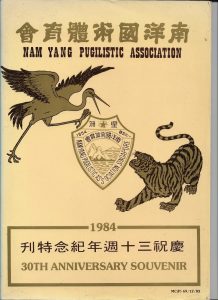
The original magazine cover showing the tiger and crane and Nam Yang Pugilistic Association’s logo – rich in symbolism.
The above article was published in Nam Yang Pugilistic Association’s 1984 anniversary magazine. Ang Lian Huat, my grand master, had clearly written it in the early 1980s so as a record of the art to which he had devoted his life. To argue that all of the information is historically accurate in the modern western sense would be a mistake. This piece of writing does, however, give an interesting insight into the history of kung fu as told amongst hokkien / min nan Chinese in the mid 20th century.
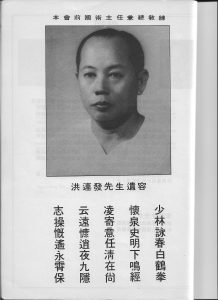
The magazine page facing the article – a tribute to Grand Master Ang Lian Huat who had died earlier in the year.
It is worth mentioning that he referred to tai chor / tai tzu as the tiger art and that he tended to refer to the five ancestral arts mentioned as the ‘five ancestors’ whereas amongst English speakers today that term is generally reserved for the art descended from Chua Giok Beng.I will publish a full biography of Grand Master Ang Lian Huat in a future post. Essentially he was born in 1924 on the island of Quemoy in the mouth of Amoy (now Xia Mun) harbour. He learned numerous styles of kung fu as were prevalent then but particularly the yong chun white crane, tai chor (tai tzu), shuang yang white crane and Shaolin weapon systems. He fought for the nationalist Kuomingtan in the civil war and fled China for Singapore ahead of the communist army’s advance. He never learned English and is unlikely to have been influenced in any way by the ‘internationalisation’ of kung fu so this is a fairly reliable historic document. He died in 1984 before this article was published.
I have included the original Chinese text of the article below. First is a ‘modernised’ version kindly prepared by my teacher Master Tan Soh Tin. Second the articles it originally appeared in an older, more obscure Chinese script along with the facing page showing a portrait of Grand Master Ang Lian Huat.
Please leave your comments.
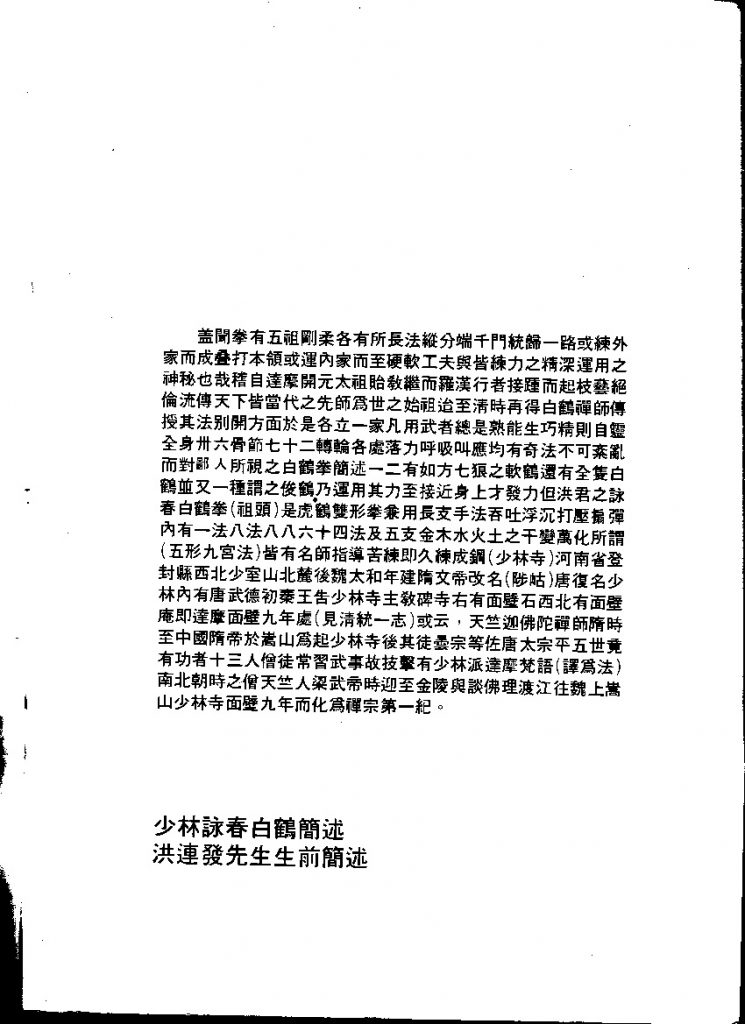
Link to original article on Master Iain’s blog: https://kungfuretreat.com/a-brief-history-of-shaolin/
